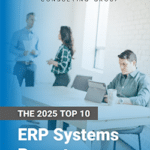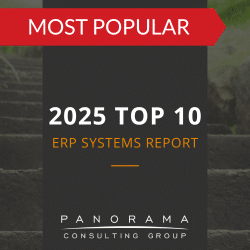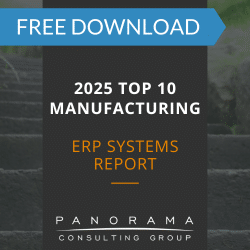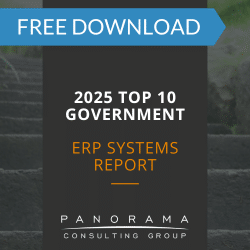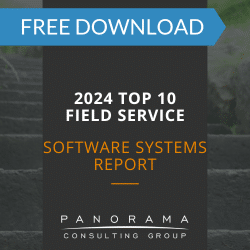A supply chain management (SCM) system is a type of software that helps businesses manage the flow of goods, data, and resources related to a product or service.
If you’re considering implementing supply chain management software, take a look at these tips and tricks for ensuring successful SCM implementation.
Expert Tips for Your SCM Implementation
1. Prioritize Business Process Management
Business process management (BPM) is a systematic approach to making an organization’s workflows more efficient and adaptable. Focusing on BPM is essential throughout a supply chain management implementation because it ensures alignment between technology and business processes.
BPM should be continuous, ensuring that the SCM system meets current requirements and is scalable to future business changes.
Start by understanding your current state, making improvements, and then gathering a list of software requirements. With an understanding of your needs, you can equip your team to select a system that will help you achieve your business goals.
2025 Clash of the Titans
SAP, Oracle, Microsoft, and Infor each have a variety of systems that can support data-driven decision-making. We surveyed customers of these four vendors to find out what their selection and implementation process was like.
2. Prepare End-Users
While developing your implementation plan, it’s critical to consider the human side of the change.
It’s easy to become so focused on ensuring the system is operable, that you spend minimal time preparing your workforce. This results in change resistance as employees struggle to understand why the change is happening and how to use new tools and technology.
We recommend using organizational change management principles to prepare employees for change. This involves assessments, training, communication, and other strategic steps that ensure long-term user adoption.
For example, a manufacturing firm anticipating change resistance might tailor its communication strategy to address the specific needs of different user groups. While frontline employees might be concerned about job security, the production team might worry about workflow disruptions and maintaining quality standards.
3. Plan for Data Migration
How will you move data from your existing systems into your new SCM system? The answer lies in your data migration strategy.
As soon as you select a system, you should start developing your migration strategy. Without a strategic plan in place, you could find yourself rushing through data conversion and compromising your data quality.
Why is data quality essential in an SCM implementation?
- Accurate real-time data ensures that strategic decisions reflect the true state of the supply chain. Inaccuracies can lead to overstocking, stockouts, and misallocation of resources.
- Inconsistent data can lead to errors in order processing, invoicing, and demand forecasting.
- Unreliable data can undermine user confidence in the SCM software, leading to low user adoption and limited utilization of the system’s capabilities.
- Advanced analytics functionality requires quality data to predict outcomes and recommend next steps. If your data is high-quality, you can use AI-powered intelligence to proactively optimize inventory levels and mitigate risks.
4. Hire a Third-Party for Project Oversight
Engaging a third-party to oversee the project team and the software implementer adds a layer of assurance that your project aligns with best practices.
Project oversight can significantly reduce risks regarding project planning, vendor contract compliance, executive engagement, and more.
For example, the third-party might find that your company lacks a detailed project plan. This expert could then work with your team to develop a project plan that accounts for data migration, change management, and all the components of SCM success.
5. Don’t Stop After Go-Live
Completing the supply chain implementation process is a significant milestone, but it’s not the final step in your journey. The following post-implementation considerations are crucial to ensure the system delivers ongoing benefits:
- Continuous Improvement: This involves regularly reviewing system performance, user feedback, and KPIs to identify areas for improvement. Look for ongoing opportunities to streamline supply chain processes and enhance system functionality.
- User Training and Support: As users become more familiar with the system, they may uncover advanced features or encounter new challenges. Providing ongoing training and support is vital to maintain high levels of user adoption.
- Benefits Realization: Are you making progress toward expected benefits, such as improved delivery times and streamlined inventory management? Continually collect data and measure outcomes for a year or more after go-live.
Transform Your Supply Chain Operations
If you want to improve demand forecasting and increase overall supply chain visibility, a supply chain management system may be the answer.
Ready to get started? Our team of business software consultants can help you evaluate and implement all types of enterprise software. Contact us below for a free consultation.
